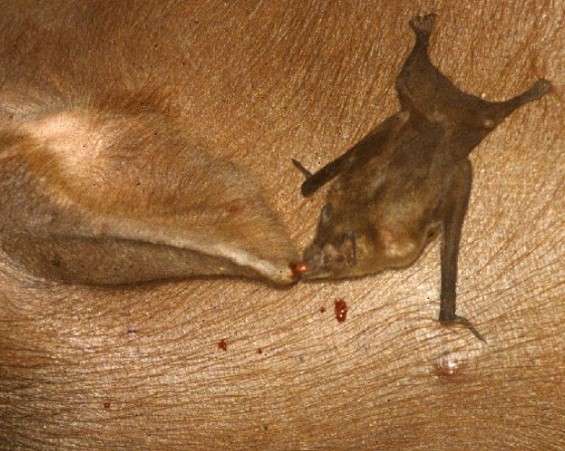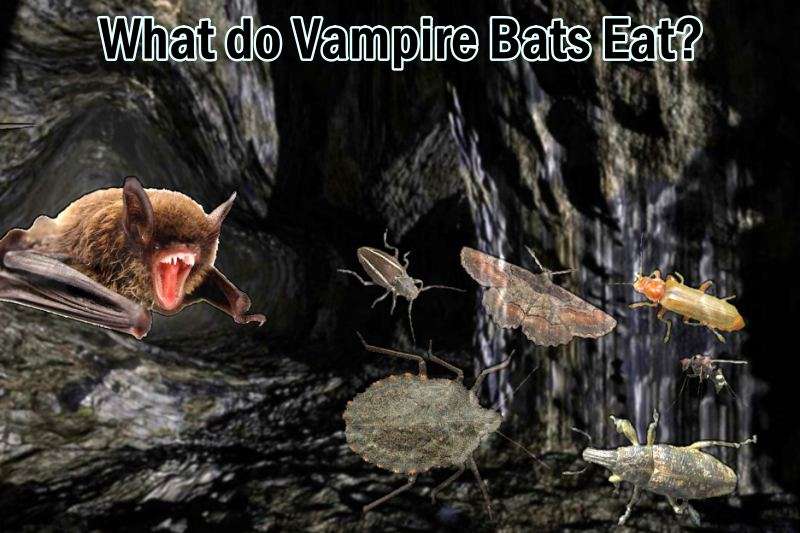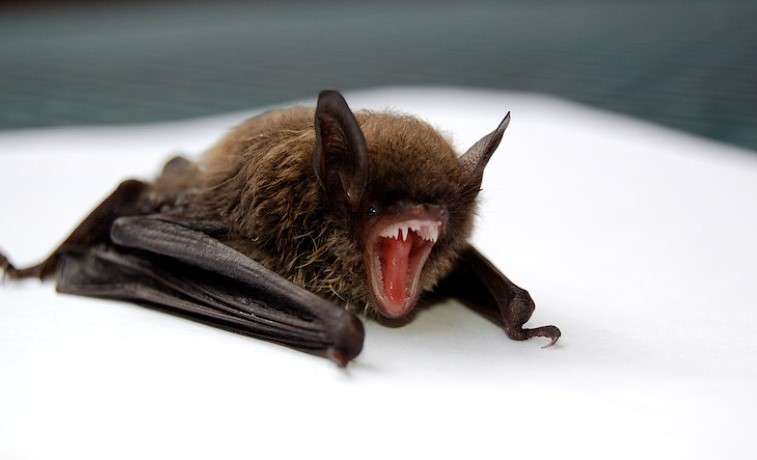Named after the legendary monsters, Vampire Bats refer to any of the three bat species that are exclusively sanguivores. Vampire Bats belong to the family Phyllostomidae, characterized by the presence of a leaf-shaped nose. Since the term “vampire” has several horror and mythical associations with itself, a mist of confusion and mystery always surrounds vampire bats. For all our inquisitive audience out there, we bring you our today’s article, “What do Vampire Bats eat?“
To answer the question, Vampire bats are sanguivorous animals, which implies that they feed exclusively on blood. They primarily feed on the blood of livestock like cattle, chickens, and even animals like dogs.
Later in this post, “What do Vampire bats eat?” we are going to discuss in detail the feeding habits of Vampire bats. So without wasting much time, let’s jump on to the latter half of this article.
What do Vampire Bats Eat?
There are three species of Vampire bats. Though they belong to different genera, it is their blood diet that connects all these three bat species.
In our previous articles on bats, we have mentioned omnivorous bats, too, that feed on fruits, nectar, and even other animals like bats, birds, etc. Vampire Bats do not belong to this category. Instead, they have a division of their own, as they feed exclusively on blood.
The three bat species that make up the group, Vampire Bats, are the common vampire bat (Desmodus rotundus), the hairy-legged vampire bat (Diphylla ecaudata), and the White-winged vampire bat (Diaemus).
The common vampire bat flourishes in rural regions and feeds on the blood of chicken, pigs, and other livestock. The other two vampires are mostly confined to undisturbed forests, where they eat other forest creatures like birds, reptiles, and mammals.
While the common vampire bat feed majorly on mammalian blood, the other two feed on birds.
The Phyllostomidae family, which includes a wide variety of mammals, includes these Vampire bats. The phyllostomid family of bats contains at least 160 different species.
The majority of phyllostomid species primarily consume fruit and other plant matter, although some also consume nectar, insects, frogs, birds, bats, etc., or are omnivorous. Only these three types of bats consume blood.
How do Vampire Bats drink Blood?
Vampire bats, like other bat species, use vision and echolocation, along with their olfactory senses, to navigate and find prey. However, vampire bats have developed a variety of distinctive traits to support their specialized feeding activity.

- Typical feeding behavior entails landing close to the desired prey, which is usually sleeping. The bat has heat-sensing “pit organs” under its nose that allow it to sense temperature variations the body brought on by blood flow close to the skin.
- On finding an appropriate location, the bat makes a very small incision (3-5 mm wide and deep) in the victim’s skin with its thin but broad, blade-like incisors. These bats also release certain pain-killing chemicals, which keep the animal unaware so that it doesn’t wake up.
- Unlike mosquitoes, bats do not suck blood. Instead, it possesses a special tongue, which has two lateral grooves on the underside. The importance of these grooves is that they can contact and expand, which helps the bat to lap up the blood.
- Vampire bat’s saliva possesses anti-coagulants, which enable free blood flow and prevent clotting. Their daily requirement is around two tablespoons of blood (around 20 gm) per day.
Vampire bats have a highly efficient digestive system and can quickly absorb the water from the blood for quick excretion. Vampire Bats need to feed daily, or else they may die in a day or two without food.
Where & How long do Vampire Bats live?
From Mexico to the end of Argentina, the Vampire Bat can be found all over South America. Both tropical and subtropical areas are home to vampire bats, which can adapt to life in both humid and arid environments.
The vampire bat, like many other species of bats, spends the day roosting in hollow trees, mines, caves, and even abandoned buildings.
The most commonly seen Vampire Bat, common vampire bats occur from Mexico and go all the way down, covering most of South America. These bats are also common on the Island of Trinidad in the West Indies.
The White-winged Vampire Bats are present from Mexico to the southern regions of Argentina and also in the Islands of Trinidad in the West Indies.
Lastly, the Hairy-legged Vampire Bats are mainly present in Mexico, along with Peru, Bolivia, Venezuela, and Brazil.
On average, Vampire Bats live up to 9-12 years of age in the wild. However, under captive conditions, their lifespan increases to anywhere between 18-20 years.
Are Vampire Bats Dangerous?
Though Vampire Bats drink blood, much like “Vampires,” they pose very little danger. The incision they make is quite small, around 5 mm, which is non-lethal for the victim animal.
The blood they drink is around 20 gm in one night, which is again quite a meager amount. They are different from the fierce-looking Vampires that you encounter on movie screens or at Halloween parties.
Vampire bats can also be tamed and form close grooming bonds with their caretakers. In one special case, the bat continued to visit its handler, even after being released in the wild.
However, what raises concern is their activity as a vector. Since they feed on several individuals, they may spread a particular disease to the entire livestock community.
Though they are immune to any blood-related disease, the germs from an affected individual may be present in their bodies, which may later be transmitted to any healthy animal. They carry the rabies virus, which results in their mass culling.
Do Vampire Bats bite Humans?
The common vampire bat is the one to feed on mammalian blood. Though they primarily feed on livestock animals like cattle, horses, etc., they may occasionally bite humans. There have been quite a few reports of bat bites in people belonging to the Amazonian communities. Vampire bat bites aren’t much pain and are usually superficial.
What happens if a Vampire Bat bites you?
A vampire bat’s bite is painless in itself. Being superficial, they do not take much time to heal, and their size makes them almost unnoticeable. But the catch is, Vampire Bats are vectors of several diseases, particularly the deadly rabies virus.
It’s an infection that affects the CNS (Central Nervous System). If not vaccinated before symptoms appear, rabies can be lethal and results in almost 80,000 deaths per year. Other diseases include Histoplasmosis and Salmonellosis.
Now, it’s time to conclude this article on “What do Vampire bats eat?” Despite their risk factors, the saliva of vampire bats has the potential to be used in medicines for preventing blood clots during strokes and heart attacks. Stay tuned to this website for many such informative articles.
References
VAMPIRE BATS – The Good, the Bad, and the Amazing
Vampire Bat- A-Z Animals
What to Do If a Bat Bites You- healthline
Also Read:

A zoology student turned writer. Nature has always been a magnet to me, and to unearth some of its secrets through my articles is my prime intention. If not engaging myself with nature and anime content, you can always find me going through some Bengali classics or filling the air with some soulful Tabla beats. An artist, trying to throw some colors to my blank canvas of life.

